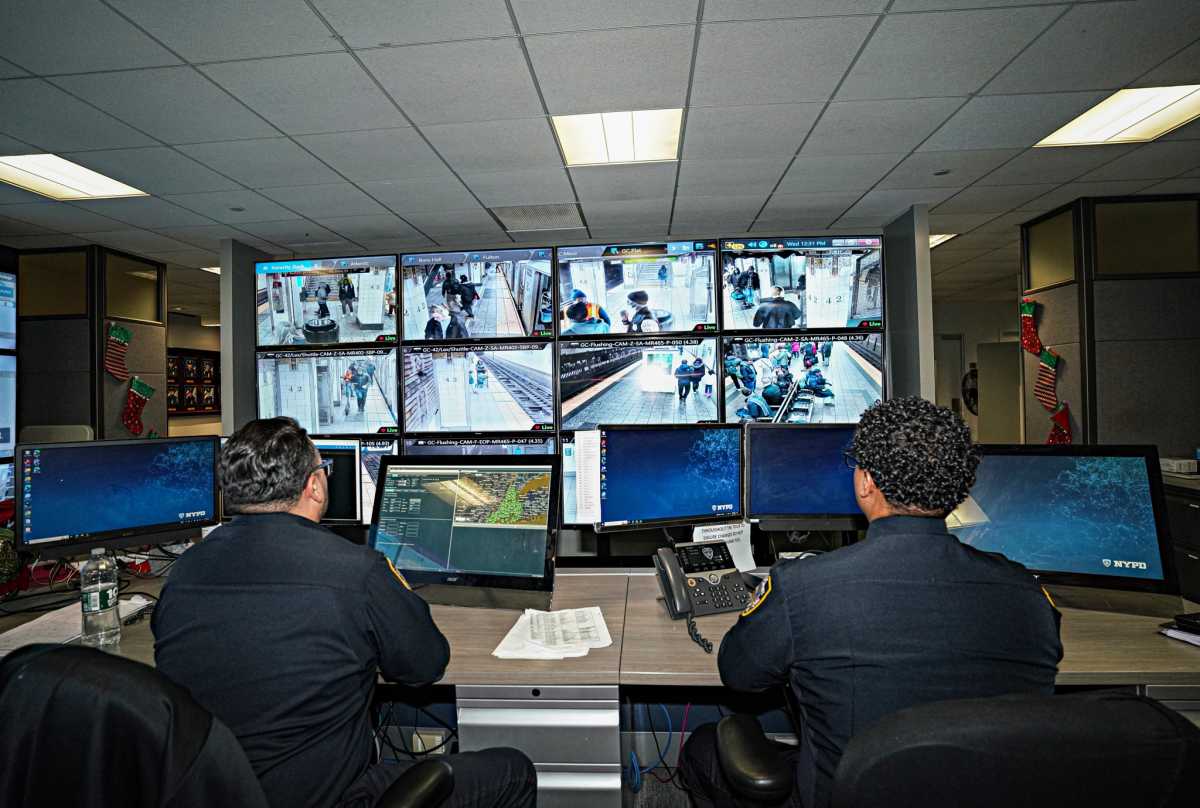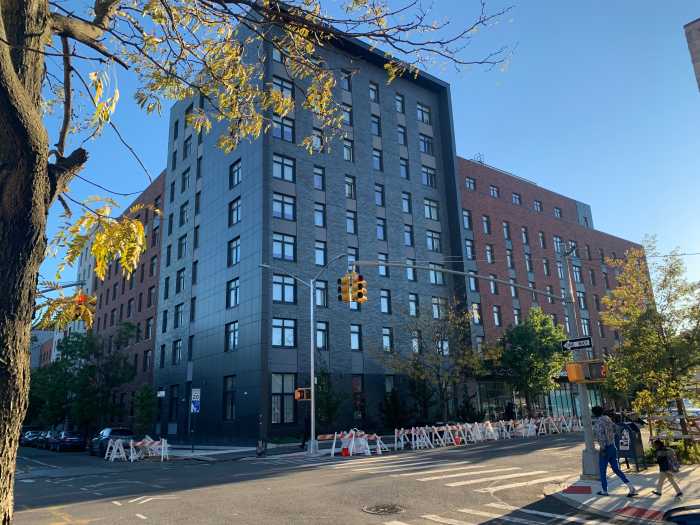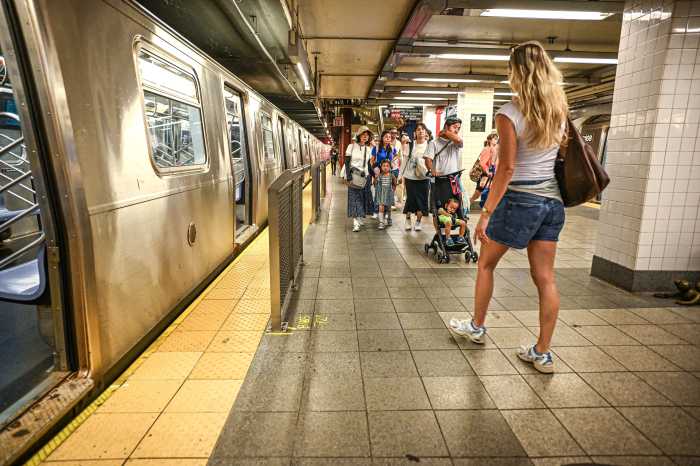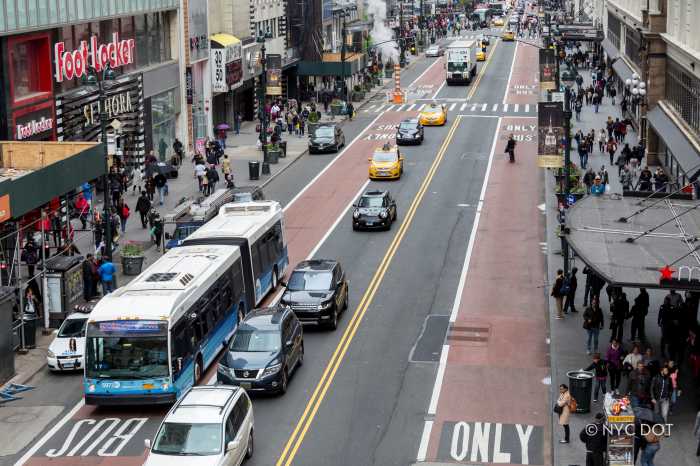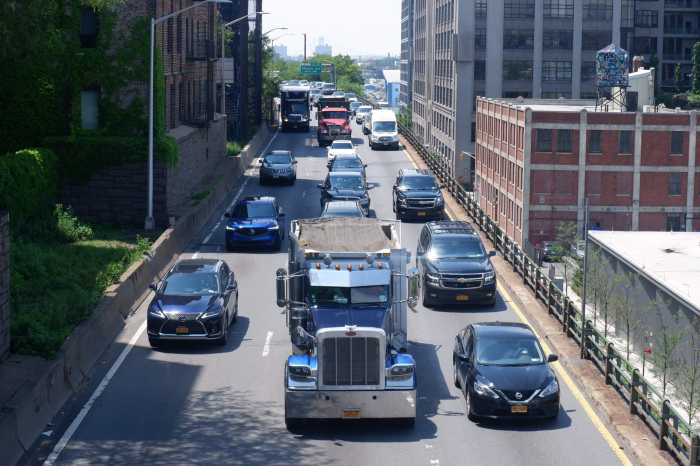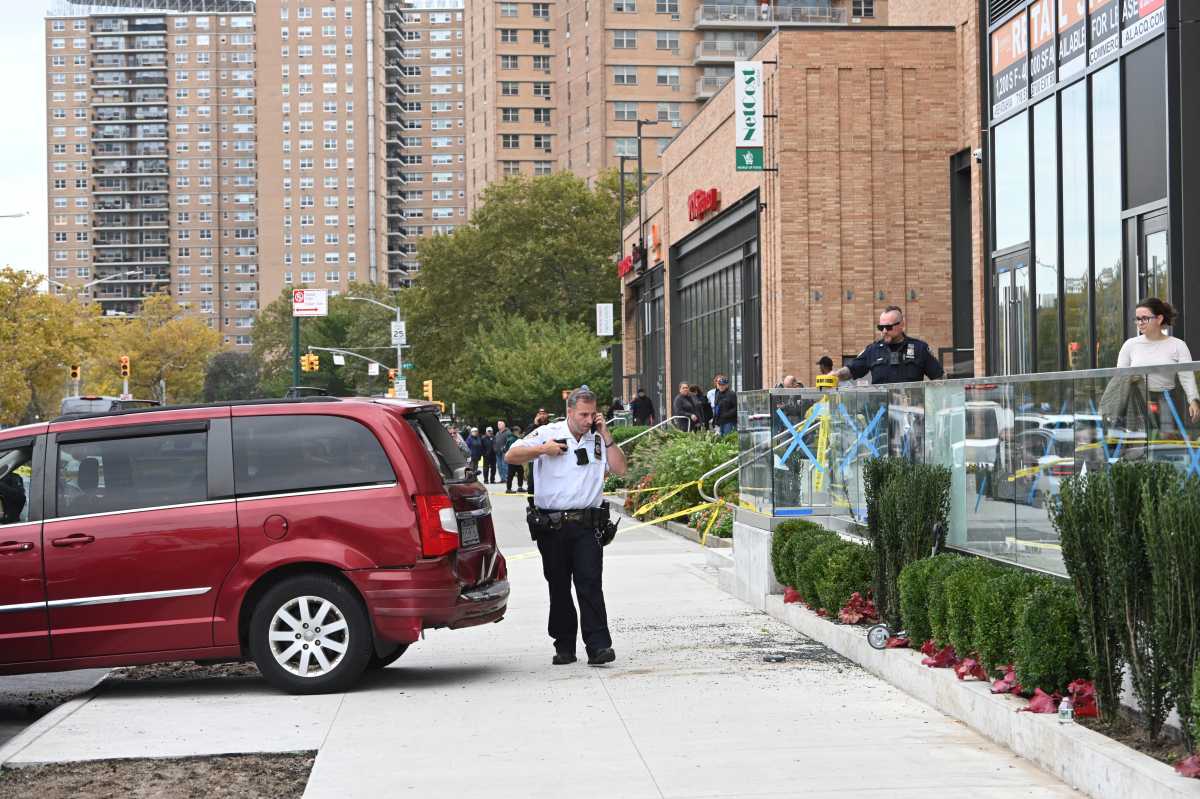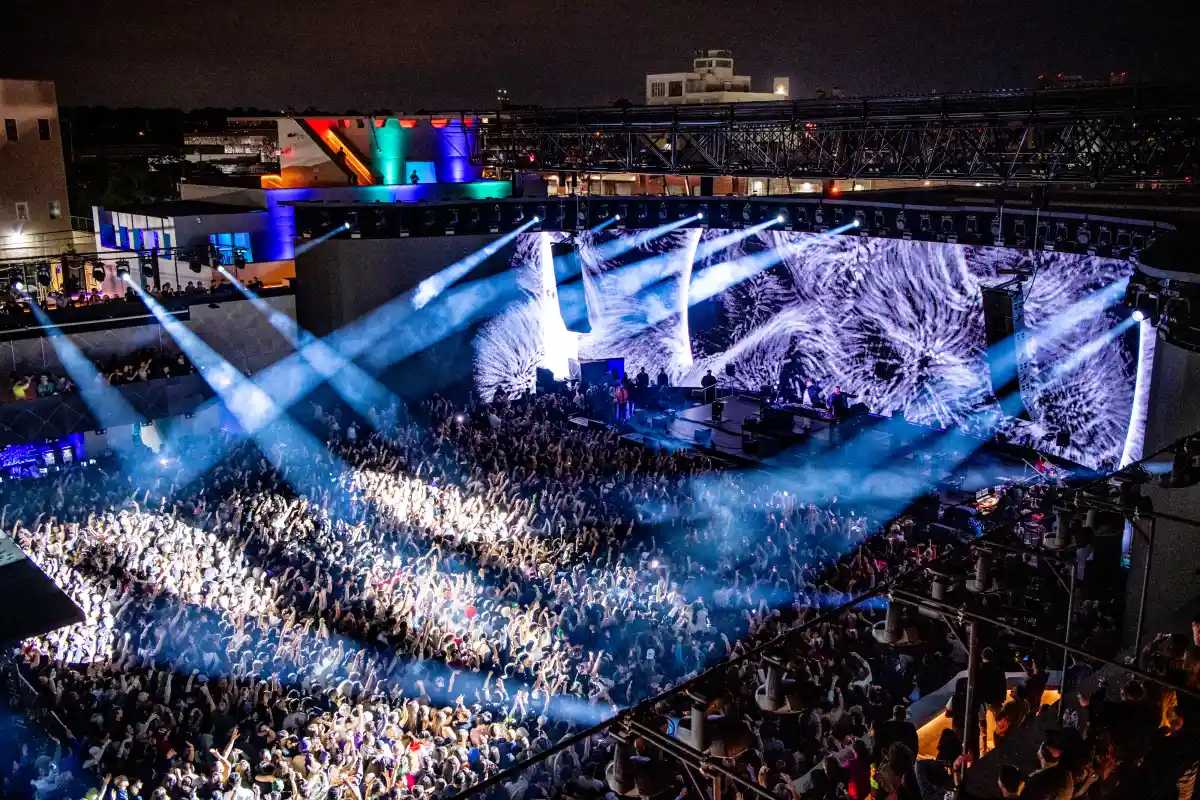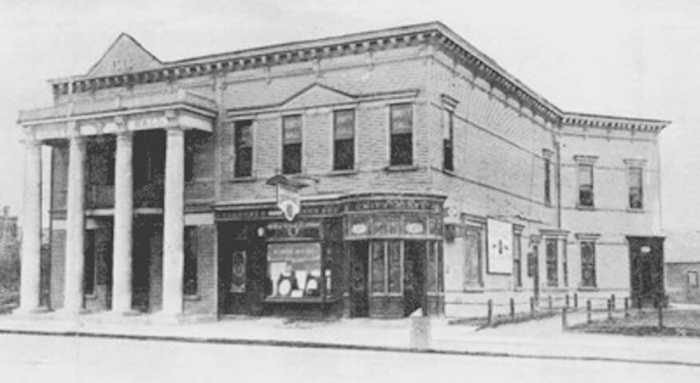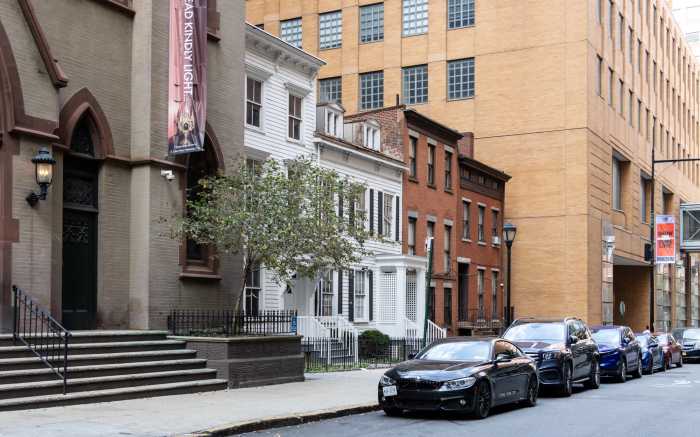Nestled inside a building not far from Brooklyn Borough Hall, an array of NYPD officers sit with eagle-eyes glued to live, subway video footage from across the Big Apple every hour of every day, keeping watch for any criminal activity.
According to Chief of Transit Michael Kemper, the round-the-clock closed circuit broadcast at the NYPD Brooklyn Joint Operation Center is part of the department’s efforts to instantly zero-in on, isolate and reproduce footage if an emergency incident arises underground.
amNewYork Metro became the first media outlet to be given access to the hub where cops watch video streamed from thousands of live surveillance cameras from inside the subway system in a continued attempt to drive down transit crime.
“This is all in real time,” NYPD Chief of Transit Michael Kemper said, gesturing around a large room lined wall-to-wall with television screens and monitors displaying zooming trains and commuters hurriedly rushing by.
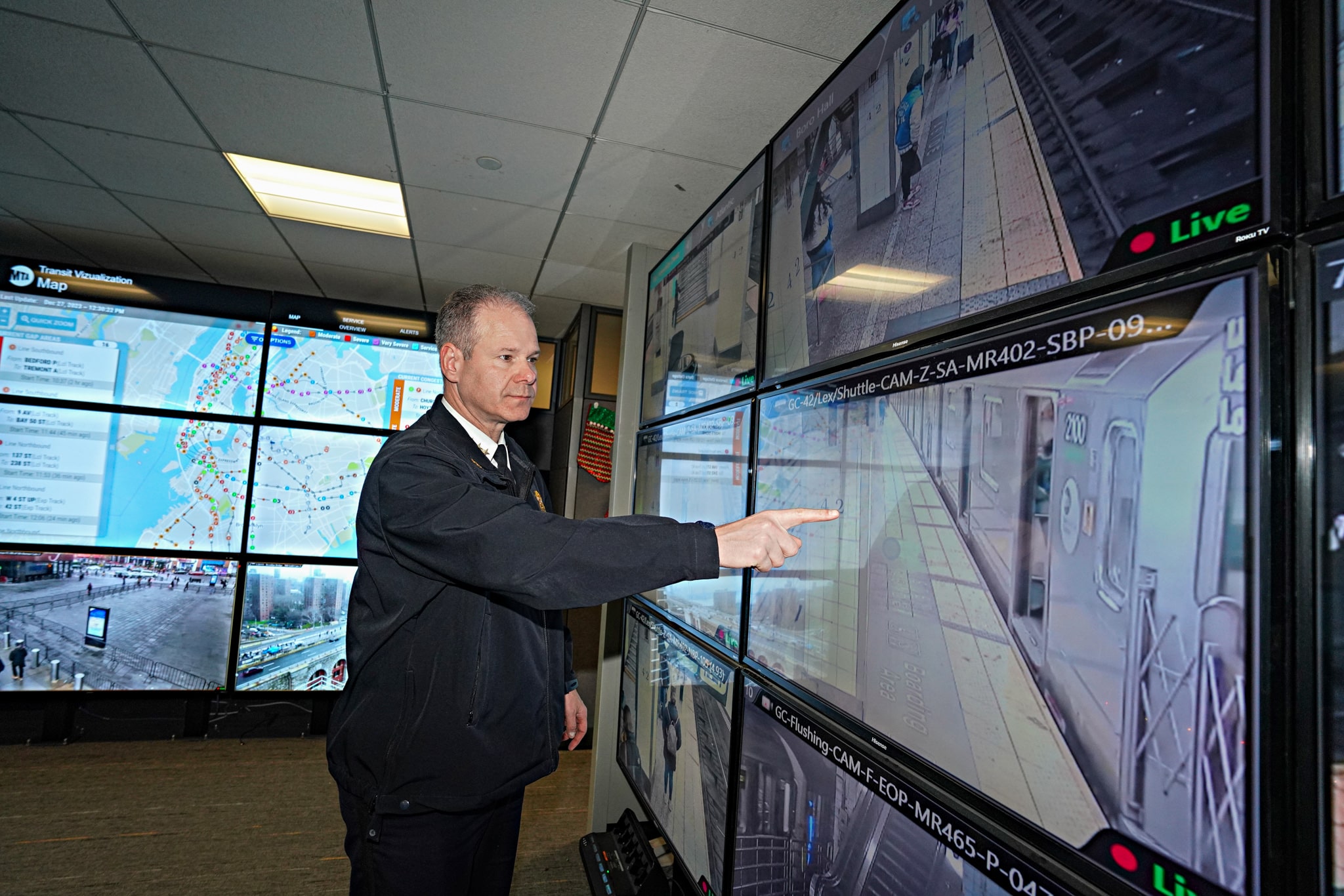
“We have the ability to watch throughout New York City or focus in at a specific station, we could focus right into that station,” Chief Kemper explained. “If we become aware of something that happens, we will go to the video at that station. If the video was captured, we’ll get those images and that video out to investigators and cops within minutes.”
Chief Kemper showcased several examples of how live, clear video can help save lives and even stop the spread of misinformation.
In one instance, surveillance captured two young teens train surfing. Kemper credited the high tech for letting police alert the MTA to have the train stopped at a nearby station so the children could be safely removed.
In another instance, a teen waiting for a train in Jackson Heights in October tragically fainted and fell into the path of an oncoming train, leading to her death. Fears arose that the 18-year-old had been pushed, but thanks to the footage recorded at the scene, police were able to see exactly what had taken place and rule out foul play.
For Chief Kemper and the NYPD at large, this is all about the ongoing effort to keep crime down in the subway system while also looking to reassure straphangers of their safety.
Police officials maintain that crime has rapidly decreased in the subway while enforcement is up. Kemper reports that arrests are up 53% when compared to 2022, with the chief stating that subway crime only makes up 1.8% of all citywide crime.
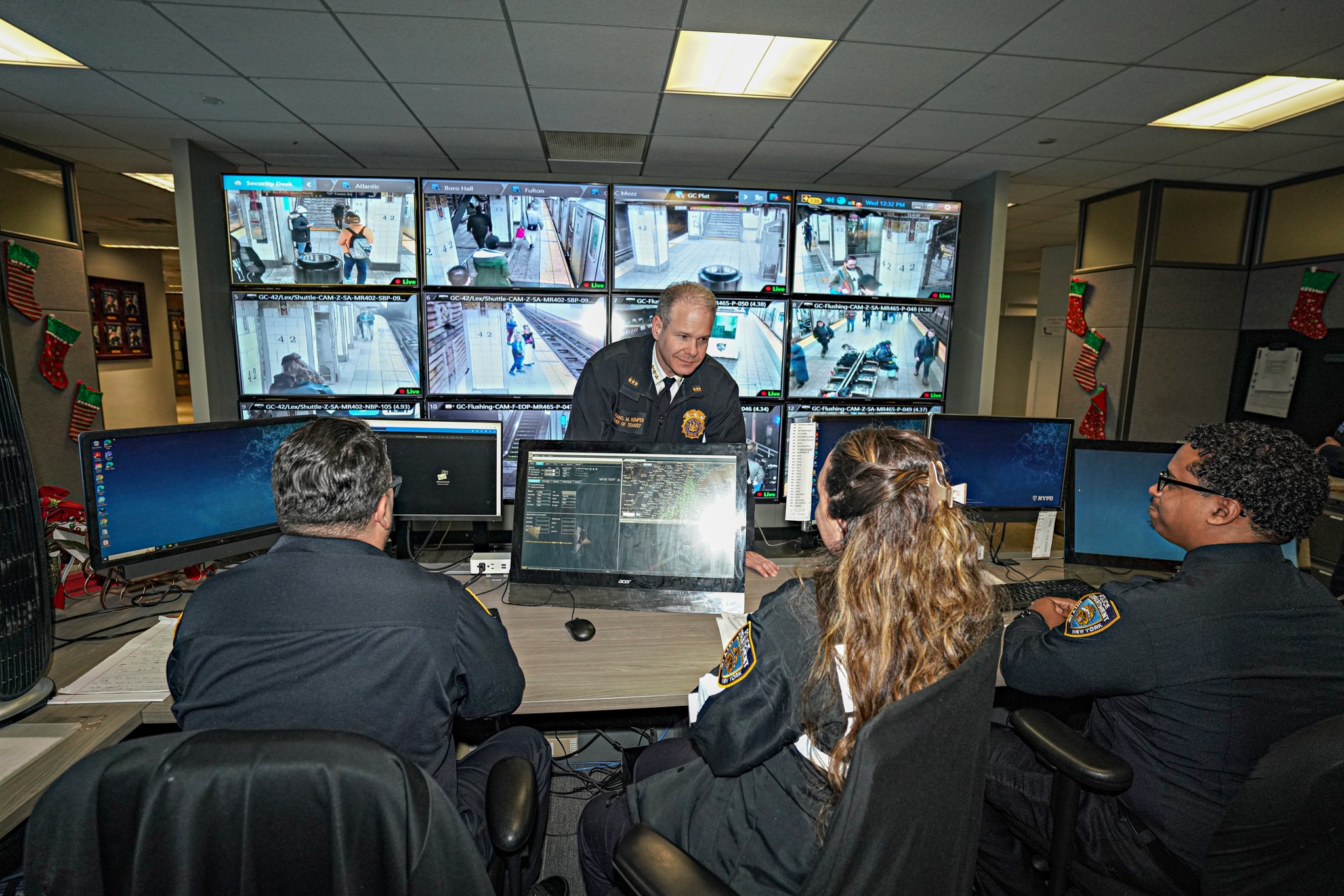
Kemper says the transit system is seeing more riders than Los Angeles has residents on some day. Though there are millions of passengers in the subway system every day, the NYPD reports an average of six crimes underground daily — three of which are violent.
Still, the NYPD struggles with a public perception that crime is up in the subways despite all the stats indicating otherwise. Kemper candidly told amNewYork Metro that the NYPD still has work to do, but he feels the progress that has been made is astronomical.
“Look, we don’t sit here and say these incidents are not happening. They are happening. This is New York City and unfortunately things happen. We don’t want them to happen, but these things do happen. But certainly not to the level that some people think or some people would like it,” Kemper said.
Kemper also lamented one of the NYPD’s most long-standing enemies: recidivism.
According to the Chief of Transit, over the course of 2023, police made 44 gun arrests and issued 128,631 summonses. Yet for certain crimes police brass say they continually arrest the same suspects over and over again.
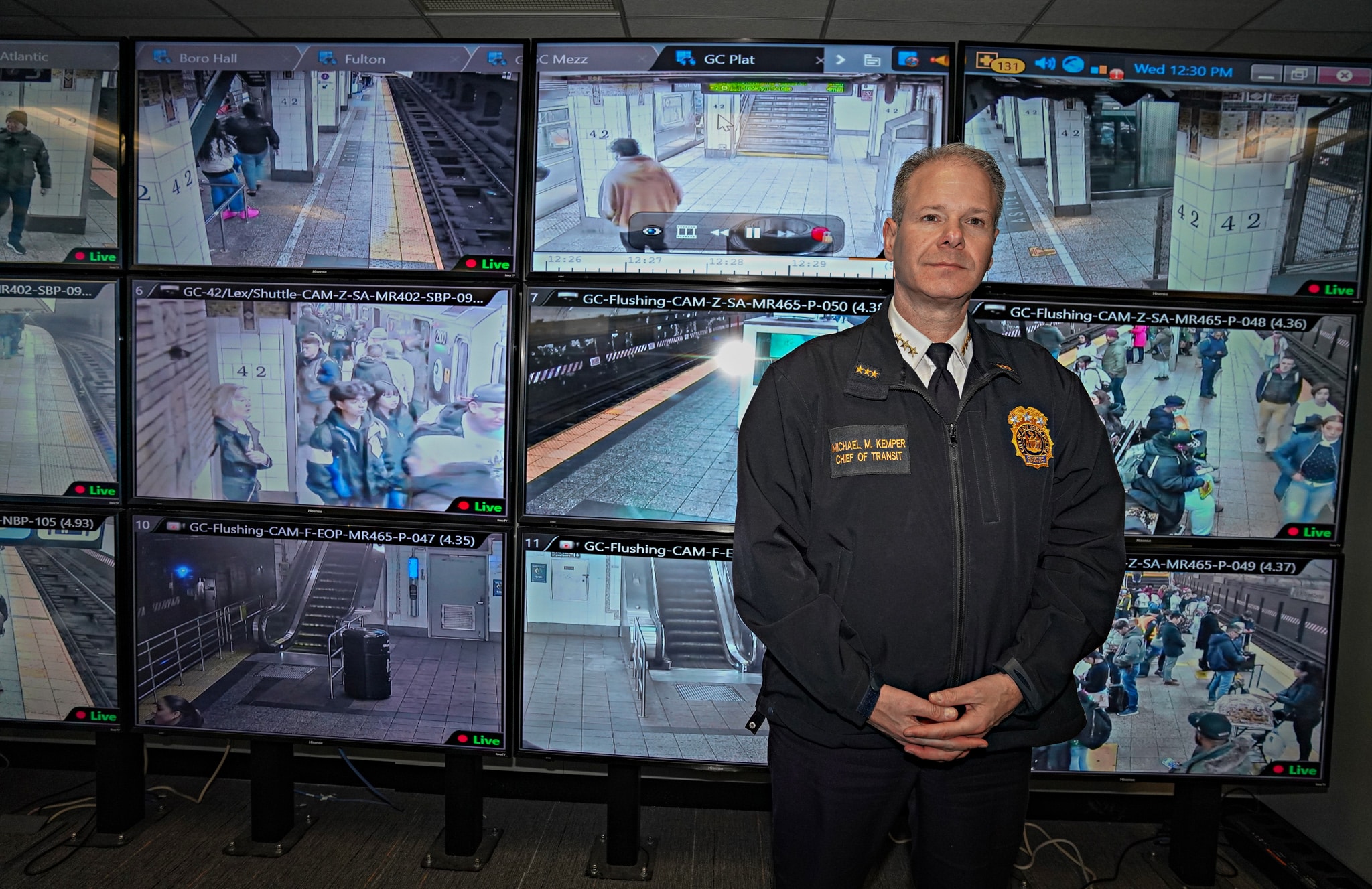
“We have arrested people that have been arrested 100-plus times. At what point are there going to be consequences?” Kemper asked, candidly bemoaning that the NYPD is often criticized for the release of criminals. “We don’t release people; we don’t set bail. We don’t sentence; we make the arrest, and we hand it off. So, if anyone’s curious what the NYPD is doing, we’re at historic highs and arrests.”
Kemper believes the NYPD Brooklyn Joint Operation Center will continue to aid in helping not only make arrests but also help locate those who maybe injured or lost in the cavernous underground system.
“We also use this to search for missing children. Missing individuals.” Kemper added.
Read more: Brooklyn Lawmaker and NYPD Clash Over How Many Stops Act



